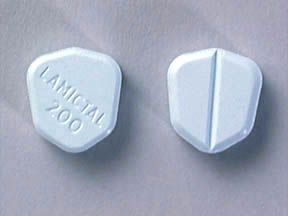Top Class Actions’s website and social media posts use affiliate links. If you make a purchase using such links, we may receive a commission, but it will not result in any additional charges to you. Please review our Affiliate Link Disclosure for more information.

Recent reports indicate Lamictal may cause Stevens Johnson Syndrome (SJS) and toxic epidermal necrolysis (TEN), both life threatening skin reactions to certain drugs.
Lamictal is used to prevent seizures in people with epilepsy as young as 2 years old. Additionally, it can be prescribed to adults to help manage bipolar disorder or epileptic seizures.
It was approved by the U.S. Food and Drug Administration (FDA) in 1994 and is sold by GlaxoSmithKline (GSK). Lamictal is now available as a generic drug.
There are several versions, including extended-release (Lamictal XR), an orally-disintegrating tablet (Lamictal ODT), and a chewable tablet (Lamictal CD). Recent medical studies suggest a strong link between Lamictal and Stevens Johnson Syndrome (SJS) and toxic epidermal necrolysis (TEN).
What is Stevens Johnson Syndrome?
Stevens Johnson Syndrome, or SJS, is a serious condition in which the mucous membranes of the skin react to a medication or infection. In extreme cases, the reaction can morph into toxic epidermal necrolysis (TEN) which is a more severe form of SJS, with a mortality rate upwards of 40 percent.
According to the Mayo Clinic, a patient may experience a fever, sore throat, cough, or burning eyes several days before the onset of an SJS rash. Lamictal SJS symptoms may include:
- Red or purplish rash that spreads
- Painful skin
- Painful blisters of the mucus membranes
- Blisters on the eyes, nose, mouth, and genitals
- Sloughing off of skin in patches
- Joint and muscle pains
- Burning sensation all over your body
Sometimes the sloughing off of skin can happen over as much as 70 percent of the body, which can prove fatal. Stevens Johnson Syndrome deaths are caused by opportunistic infections – environmental hazards that present themselves and become more dangerous as a result of the skin stripping away.
There is no cure for SJS. This is what makes getting help at the first sign of dangerous symptoms so completely vital, especially if on a medication like Lamictal, which has a known relationship with Stevens Johnson Syndrome.
SJS complications can be life threatening and include secondary skin infections (cellulitis), sepsis, eye problems, damage to internal organs and permanent skin damage.
Lamictal SJS Warnings
Lamictal carries an FDA Black Box Warning about the risk of life threatening skin reactions, including Stevens Johnson Syndrome and toxic epidermal necrolysis. These severe rashes are estimated to affect one in 1,000 adults and up to 1 in 50 children. Most cases of Stevens Johnson Syndrome from Lamictal occurred within 2-8 weeks of treatment, although rare cases have occurred up to 6 months.
Lamictal SJS Lawsuits
People who are filing Lamictal Stevens Johnson Syndrome lawsuits against GSK claim that the drug manufacturer was aware of the SJS side effects associated with Lamictal but fraudulently concealed this information from the medical community and consumers.
Do YOU have a legal claim? Fill out the form on this page now for a free, immediate, and confidential case evaluation. The Stevens Johnson Syndrome attorneys who work with Top Class Actions will contact you if you qualify to let you know if an individual lawsuit or class action lawsuit is best for you. [In general, SJS lawsuits are filed individually by each plaintiff and are not class actions.] Hurry — statutes of limitations may apply.
ATTORNEY ADVERTISING
Top Class Actions is a Proud Member of the American Bar Association
LEGAL INFORMATION IS NOT LEGAL ADVICE
Top Class Actions Legal Statement
©2008 – 2024 Top Class Actions® LLC
Various Trademarks held by their respective owners
This website is not intended for viewing or usage by European Union citizens.
Get Help – It’s Free
Help for Victims of Stevens Johnson Syndrome
If you or a loved one were diagnosed with Stevens Johnson Syndrome (SJS) or toxic epidermal necrolysis (TEN) after taking a prescribed or over-the-counter medication, you may be eligible to take legal action against the drug’s manufacturer. Filing an SJS lawsuit or class action lawsuit may help you obtain compensation for medical bills, pain and suffering, and other damages. Obtain a free and confidential review of your case by filling out the form below.
An attorney will contact you if you qualify to discuss the details of your potential case at no charge to you.
Oops! We could not locate your form.












